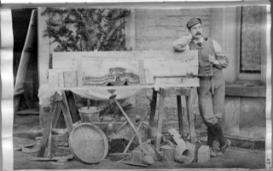For human society, the Anthropocene is characterized by enormous gains in control, but also by dramatic losses of control. "Deep Time Labscapes" explores the history of this tension through an object that is actually beyond control: geological time.
Experiments on the formation of rocks, mountains, and glaciers in the nineteenth century, and investigations on the future behavior of materials in certain geological environments in the late twentieth century testify to a two-hundred-year history of modeling deep time and deep future. In this respect, the discovery of deep time not only represented another great insult of humanity (after Freud), but also offered a new field of action for human activities with the operationalization of large time scales. Using three case studies (mountains, glaciers, nuclear waste repositories) from the European Alps, Great Britain, and Scandinavia, "Deep Time Labscapes" explores the modeling of deep time in the laboratory. At its core is a history of thinking in natural analogues and experimental simulation in earth system science and of the tension between observation and experimentation. In this regard, the experimentalization of deep time demonstrates several things; the development of deep time labscapes shows the historicity of past and current geo-human temporalities; the translation of geologic time into labscapes served as a central argument in the competitive struggle for cultural authority within the theoretical and applied earth system sciences in the late nineteenth century; and natural analogue studies operating with geological time were and are still fragile elements of modern risk communication between governments, insurance industries, private industries, scientists, and society.

